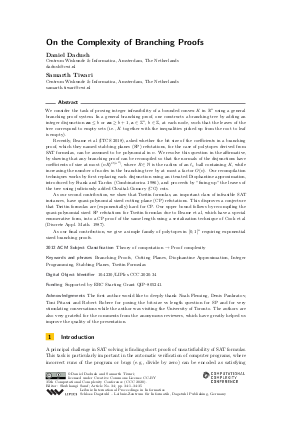LIPIcs.CCC.2020.34.pdf
- Filesize: 0.7 MB
- 35 pages

 Creative Commons Attribution 3.0 Unported license
Creative Commons Attribution 3.0 Unported license





















Feedback for Dagstuhl Publishing